In Part One of this series I laid out my understanding of the alimentary canal, or as I call it, the Nutrition Tube. Understanding the basics of how it works was my first step in losing 50 pounds and reaching a better level of health.
As a reminder (and a sort of disclaimer), I am not a doctor or a nutritionist. That is both bad and good. It is bad because I have only a layman’s understanding of the fine details. You should not turn to me to learn the scientific intricacies of your body’s anatomy or biology. There are plenty of qualified people you can turn to for that. It is good because health and nutrition should belong to you and me regardless of whether we are scientists or not. This is my life and my body. I need to understand how it works and what it needs to function optimally. So, this series is not a scientific paper or an argument. It is really just a sharing of what I have learned so far and how that has led me to a much better place health-wise. I am always learning, so I expect that I will learn some additional things by writing this series. The comments section at the bottom is a good place for us to have a conversation if you agree or disagree with something you find here. We can learn together. I am not a fanatic about this. I am a student.
With that out of the way, let’s get started with a couple of analogies.
Your Engine
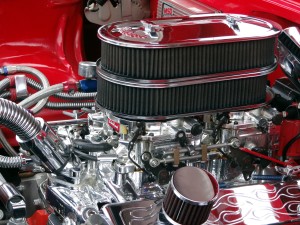 If your car or truck has a gasoline engine, what would happen if you filled it with water? Everyone knows it would not run at all. Your engine was designed to burn a precise mixture of gasoline and air. That precise combustible mix explodes when the spark plugs fire. These explosions over and over again in sequence drive the pistons inside the cylinders which turn the crankshaft and propel your vehicle down the road. If the mixture of fuel is not gas and air, but rather water and air, you will get no explosions. In fact, even if you were to fill your tank half with gasoline and half with water, your engine may sputter and try to run a bit, but it will still not run as designed.
If your car or truck has a gasoline engine, what would happen if you filled it with water? Everyone knows it would not run at all. Your engine was designed to burn a precise mixture of gasoline and air. That precise combustible mix explodes when the spark plugs fire. These explosions over and over again in sequence drive the pistons inside the cylinders which turn the crankshaft and propel your vehicle down the road. If the mixture of fuel is not gas and air, but rather water and air, you will get no explosions. In fact, even if you were to fill your tank half with gasoline and half with water, your engine may sputter and try to run a bit, but it will still not run as designed.
Think of your Nutrition Tube as you do your gas tank. Let’s assume for a moment that your body has been designed to run optimally on a precise mix of fuel — whatever that precise mix is. If you fill your Nutrition Tube with something other than that precise mix, your body is not going to function optimally. It may sputter and try to run, but ultimately you may end up sick and overweight.
Your Chemistry Lab
As we explore the way the food we eat nourishes us, I want you to pay special attention to the chemical processes at work. I ran across a quote in my reading or listening that really makes this point. I wish I could remember who wrote or said it so I could give them credit. This idea forms the second analogy:
Your body is more like a chemistry lab than a bank account.
We have already observed that when we first put food in our mouths saliva is introduced into the mix to help break it down. Our stomachs add acids and other digestive juices to continue the process. Those are chemicals your body produces to make this whole system work.
Most of us think of nutrition, weight gain, and weight loss like we do a bank account. If you eat more calories and/or burn less energy, your fat cells are going to get bigger. If you eat fewer calories and/or burn more energy, your fat cells are going to get smaller. This views weight gain and loss as a mathematical calculation. This is why so many of us count calories. In fact, the calories in/calories out theory is the dominant theory today. People who even question it are thought to be anti-scientific. Well, I am in that group because I do believe the body is more like a chemistry lab than a bank account. The chemical processes at work throughout the system are extremely important, and they determine how the food we eat is ultimately used by the body.
So, think of your body as an engine designed to burn a specific mix of fuel, and think of it as a chemistry lab designed to break down and process the food we eat and the liquids we drink.
If the calories in / calories out theory is true, then 1,000 calories is 1,000 calories regardless of the food. Let’s compare 1,000 calories of two different foods – doughnuts and broccoli.
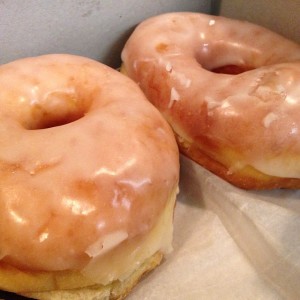
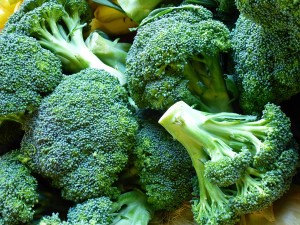
To believe that eating 1,000 calories of these two different foods would yield the same result in the body is to ignore the chemical processes that take place to make these foods usable to the body.
Let’s compare these two foods to see what they’re made of.
The first thing to notice is that it takes a lot more broccoli by weight to get to 1,000 calories than doughnuts — 2,940 grams vs. 260 grams.
| 1,000 Calories | Doughnuts 260 grams | Broccoli 2,940 grams |
| Total Fat | 60.00 g | 10.88 g |
| Saturated Fat | 15.00 g | 1.15 g |
| Trans Fat | 0 g | 0 g |
| Polyunsaturated Fat | 0 g | 1.12 g |
| Monounsaturated Fat | 0 g | 0.32 g |
| Calories from Fat | 540.0 | 97.94 |
| Cholesterol | 25.0 mg | 0 mg |
| Sodium | 475.0 mg | 970.6 0 mg |
| Carbohydrates, Total | 110.0 g | 195.30 g |
| Fiber, total dietary | 2.5 g | 76.47 g |
| Sugars, total | 50.0 g | 50.0 g |
| Protein | 10.0 g | 82.94 g |
| Vitamin A | 0 IU | 18,323.68 IU |
| Vitamin C | 6.0 mg | 2,623.55 mg |
| Calcium | 300.0 mg | 1,382.36 mg |
| Iron | 3.6 mg | 21.47 mg |
Without getting into the details of all of these numbers, just notice some of the differences. Fat, carbohydrates, protein, and fiber all differ considerably from one another. A quick glance at the last 4 categories also shows how different these two foods are in vitamins and minerals. Also, while I included in the table all 16 categories I found for the doughnuts, I would need an additional 47 rows to list all of the nutrients in the broccoli.
So, 1,000 calories of these two foods provide the same number of calories, but that is where the similarity stops. What I find fascinating is what happens once you have chewed and swallowed either of these foods. In Part One we said that when the food leaves your mouth it enters the esophagus and is then moved into the stomach. When it leaves the stomach it is a very thin slurry (actually called chyme ) that enters the small intestine where much of the absorption will occur. Also included in the slurry is liquid and the digestive juices from the mouth and stomach. Your small intestine can only absorb what exists in that slurry. The doughnut slurry differs considerably from the broccoli slurry as illustrated in the table above.
The chart below provides a more visual comparison of the two slurries with regard to the main nutrients and how different these two foods really are.
Once you have made the decision to eat 1,000 calories of doughnuts, there is nothing you can do to change the nutritional profile of the slurry that your intestines will have to work with. Since the Nutrition Tube is literally a long tube, what enters the top exits at the bottom except for what is allowed into the body and bloodstream through an amazing process. For your body to benefit from this slurry, the nutrients have to “escape” the tube and enter into your bloodstream. Escape is the wrong word. Your digestive system actively escorts the nutrients into the bloodstream. This is the process called absorption. As we enter into a discussion of this absorption process, let me say that you can go as deep as you want to go on how this process actually works. The anatomy of the human body is remarkable and complex. I am not qualified to speak in detail about this, so I will stick to my working knowledge of how it functions. I can know as much as I need to know to understand how it impacts my health. That is my only goal. If you want to go much deeper, here is a wonderfully detailed treatment of the digestive process.
Villi
In Part One we mentioned that the walls of the small intestine are lined with villi, which are tiny peaks, or fingers, that protrude inward from the walls. I don’t think we really have the picture yet of this amazing part of the Nutrition Tube. Since the nutrients are going to be absorbed in the small intestine, just how much surface area are we talking about? I remember as a kid hearing that if Colorado’s mountains could be mashed flat with the state’s borders expanding out to accommodate all of that surface area, Colorado would be the largest state in the country. In other words, Colorado is the largest state in the USA in surface area. I have not been able to verify that, and I doubt it would be bigger than Alaska with its huge land area and large mountains. Regardless, the point is that if you count all of the surface area that exists on those mountains and hills, the state is much larger than the simple area of its length x width.
Think of your small intestine the same way. The small intestine is ranges in length from 15 feet up to 32 feet, but averages right at 23 feet. It is around 1 inch in diameter. It is coiled up in a weird and wonderful way in order for it all to fit in your abdomen. The inner lining is a layer of mucosa with the villi rising from it. There are approximately 20,000 villi for every square inch of mucosa in your small intestine. This means you have millions of villi. These villi are between 0.5 mm and 1.6 mm in length. Since they are peaks, this means there is a lot of surface area available to come in contact with your food slurry. These villi also have really tiny microvilli (depicted at the far right of the diagram below as the small fingers at the top of the absorptive cell) extending from them. If you could stretch out the small intestine, cut open the tube in a straight line lengthwise to make it a flat 23 (or so) feet long rectangle and then mash flat all villi and microvilli (while allowing the edges of the flat intestine to expand outward as you went), the total surface area would be something close to an area larger than a tennis court but smaller than a football field. Wow! That is a lot of surface area.
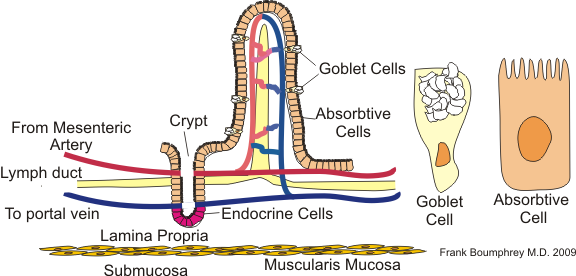
By Boumphreyfr (Own work) [CC BY-SA 3.0 (http://creativecommons.org/licenses/by-sa/3.0) or GFDL (http://www.gnu.org/copyleft/fdl.html)], via Wikimedia Commons
Villi is the plural word for one or more. The singular word is villus. So, how does a villus absorb nutrients? The chart above shows the structure of the villus and its interconnection with the rest of the body. Let me point out a few interesting things about the diagram of the villus.
- Artery – The red line ultimately connects to an artery
- Vein – The blue line ultimately connects to a vein
- Lymph duct – the yellow line is a connection to the lymphatic system
The absorptive cells use a complex chemical process to allow the nutrients pass through them and into the blood stream. Some nutrients go into the lymphatic system and get processed differently. Remember, I am claiming that your body is more like a chemistry lab than a bank account. We will see see this theme continued
Conclusion
In this article we have explored how the food we eat escapes the Nutrition Tube and gets into our blood stream for use by the body. It does it via absorption that takes place primarily in the small intestine.
In Part Three we take a brief look at the large intestine.
Once I have completed exploring the body’s biology, I will lay out exactly how I overcame years of health frustration to finally reach a better level of health and shed 50 pounds. Don’t forget the comments section below if you want to start a conversation.

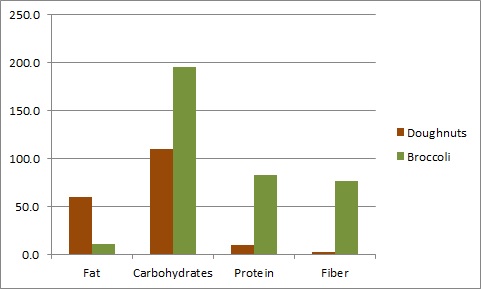
I found this article very interesting. Especially, since I am not a big doughnut fan.
I know you’re not, but I recall a time in my life when I ate a dozen Snowflake glazed doughnuts in one sitting 🙂
Hey, thanks for the info. I do believe that the calorie in/calorie out theory isn’t 100% incorrect. I think it plays as more of a baseline for those just getting into the groove of losing weight, and the effects of healthier foods is the next topic to learn. The depth of this article is phenomenal!